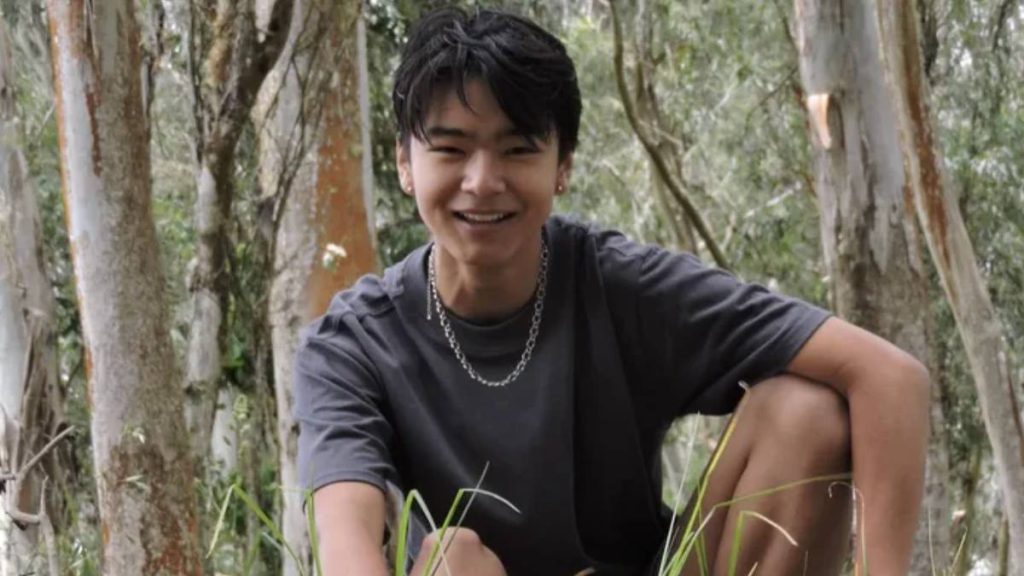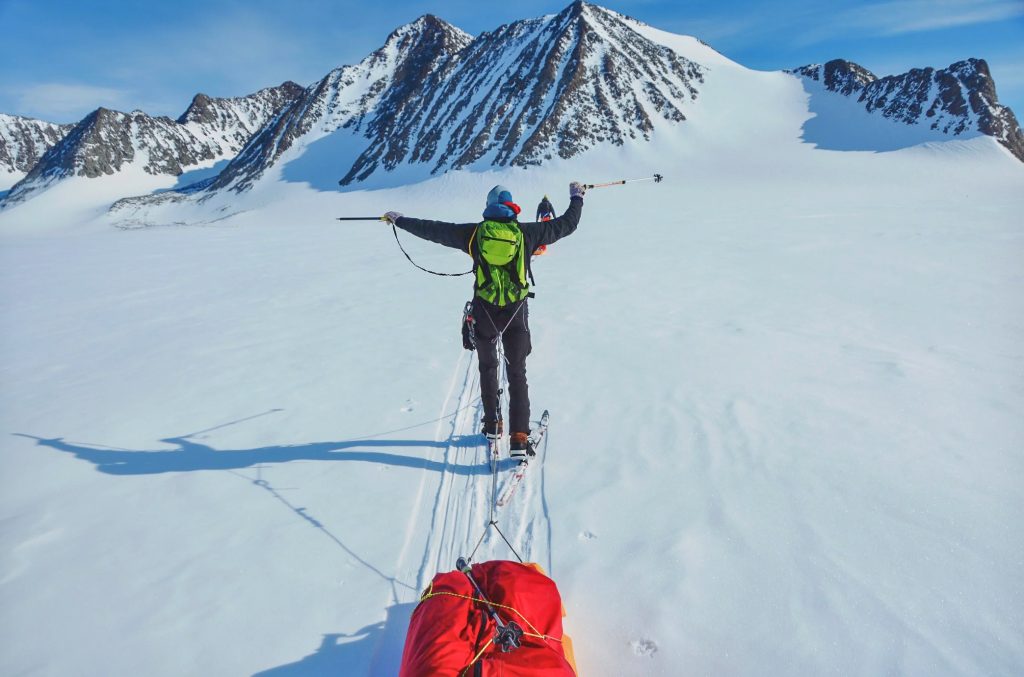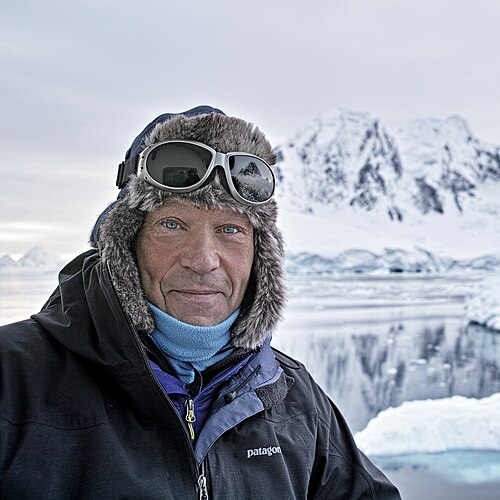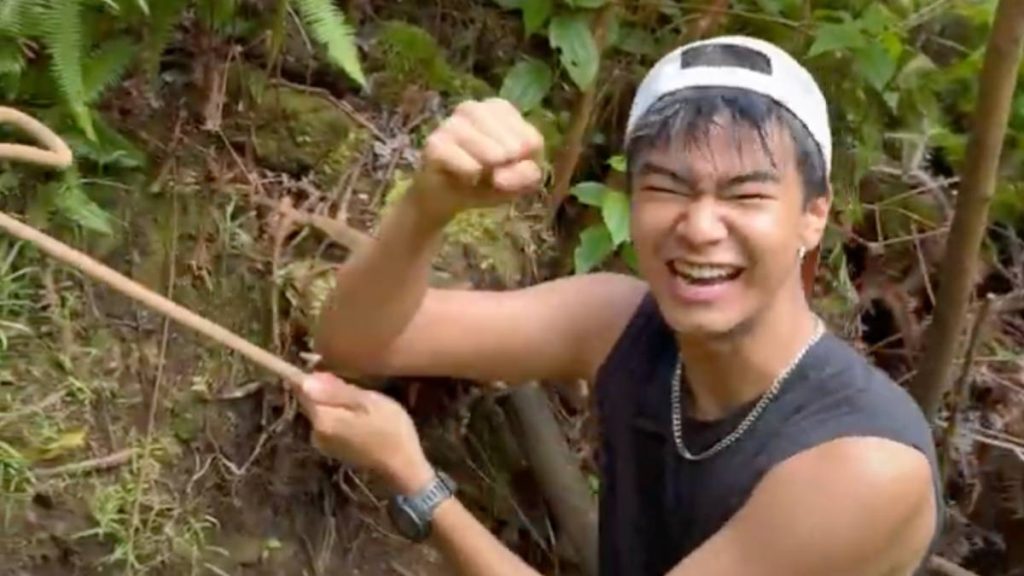UH college student joining Antarctica expedition with polar explorer Robert Swan

Three years ago, Eric Pōmaika‘i Gee was a student at Kealakehe High School when he invited polar explorer Robert Swan to speak to Hawai‘i’s youth about the Antarctic and how to get involved with environmental sustainability and renewable energy.
Gee had connected with Swan, known as the first person to walk to both the North and South poles, through his fellowship program with the Villars Institute, a nonprofit foundation to accelerate the transition to a net zero and nature positive economy.
The lifelong fellowship is a learning journey designed to empower a new generation of leaders for a healthier planet.
Now, in 20 days, 19-year-old Gee of Waikōloa will be joining Swan on a mission to Antarctica to show the world why it is a critical resource that needs to be protected.
He leaves for Chile on Nov. 29, the starting point for Ice Station Antarctica Expedition, which will journey to Union Glacier that is about 600 miles from the South Pole.
The expedition will be live-streamed to classrooms around the world.

“I’m more motivated than ever to stand up and use my voice to advocate for a world where we’re able to self sustain, where we’re able to preserve the Antarctic,” Eric Gee said.
During the trip, Gee is hoping to work with Swan to test out different forms of renewable energy to show that it’s a real option, while also protecting the Antarctic.
Gee graduated from Kealakehe High School on the Big Island, and now is a sophomore at the University of Hawai‘i at Mānoa, double-majoring in international business and finance with a minor in political science. He was one of two fellows selected from the Villars Institute Fellowship Program and will be the only American on the trip.
Swan, the first person to walk to both the North and South poles, is training the next generation before a critical international decision will be made. In 2041, the Antarctic Treaty — an international agreement signed in 1959 that designates the continent as a natural reserve, promoting its use for peaceful purposes and primarily scientific research, while prohibiting military activity and mining — comes up for review.
World leaders will need to make many decisions, including whether to keep the mining ban or open Antarctica to natural resource extraction.
“In 2041, I’ll be 35,” Gee said. “My generation will inherit this decision, and I believe Hawaiʻi deserves a voice in it. What happens in Antarctica affects our islands directly through sea level rise. I’m going to learn, witness and bring this story back home.”
The expedition is led by Swan, who founded the company named 2041 that is dedicated to the preservation of the Antarctic and the author with Gil Reavill of “Antarctica 2041: My Quest to Save the Earth’s Last Wilderness.”

Gee will work alongside climate scientists, renewable energy engineers and international youth delegates. The team will be doing a variety of things, including examining the bacteria levels on the ice.
Gee will spend a few days in Punta Arenas, Patagonia in Chile, talking to local middle schoolers and high schoolers about the mission and why Antarctica is important. After that, the team will fly to Antarctica for eight or nine days.
Upon his return to the islands, Gee will conduct community presentations, school visits and educational outreach across Hawaiʻi.
This expedition will be the first to broadcast live from Antarctica to schools worldwide, showcasing renewable energy technology working in extreme conditions.
“I would not have ever thought a Big Island boy would be going to Antarctica,” said Gee, a third-generation Chinese American who was born and raised on Hawai‘i Island.
Gee’s mother, Darien, said when her son approached her about the opportunity to apply for the Antarctica expedition, she was opposed to it because he had so much going on.

“He lives his life with a full plate,” Darien Gee said.
Not only is her son a full-time college student, he just wrapped up serving on the Hawai‘i State Youth Commission, appointed by Gov. Josh Green, in August. He also had just returned from studying abroad in Italy when he applied for the expedition.
From a young age, Darien Gee said her son has been extremely aware of people and places.
At age 7, Darien Gee said Eric started walking around their neighborhood in Waimea at the time with a wagon collecting cans and glass bottles to recycle. When he reached middle school, he sold solar lanterns to raise money for the school garden.
“He’s aware of how vulnerable we are and how lucky we are,” Darien Gee said. “It’s sharpened his gaze a little bit.”
Eric Gee said he has witnessed environmental changes in his community through the years: “I remember when Waimea and Kawaihae were green all the time. Now, it’s dry with yellow leaves and dead grass.”
Growing up in Hawai‘i, Gee said he learned that taking care of the land is part of the culture.
“We’re going to run out of fossil fuels and oils,” he said. “We need to look toward forms of renewable energy.”
When he first learned that he was chosen for the expedition, he thought about the ice.
“I’m going to be able to see ice for miles and miles long,” he said. “I’m going to be surrounded in a place where weather conditions are unforeseeable.
“Even though Antarctica isn’t a place people live, it’s a place that’s purely nature. I’m going to be really isolated. They compare this to survival.”
Eric Gee was put on his path with the fellowship by Kealakehe High School teacher Justin Brown, the career and technical education coordinator.
Brown had Gee in his homeroom, and the teen took several of his engineering classes and participated in the Model UN program run by Brown.
Brown put Gee on the path for the Villars Fellowship, saying the then 16-year-old liked soaking up opportunities: “He seemed like the right kid to follow through and make the most of the experience.”
After Gee was chosen for the Antarctic expedition, Brown said the 19-year-old called to thank him.
“I get excited to see what he’s going to make of this opportunity,” Brown said. “I don’t think this is the end for him. It’s going to springboard him into bigger and better things in the community.”
In the weeks leading up to his trip, Gee has been familiarizing himself with Antarctic and how’s it’s changed over the years.
“I’m training physically, doing a lot of lifting and cardio,” he said. “I’m meeting multiple times a week with those involved with the global outreach project.”
At a time when the climate is changing, Gee said it’s important to give back to a place that “raised and nurtured us. … I want to give back to my planet. I want my kids to be raised on a planet where the climate isn’t awful.”
While expedition starting in Chile is covered in a scholarship, Gee is fundraising $5,000 to finance his flights to and from South America, as well as arctic clothing and tech, including a Go Pro to document the journey.
As of Saturday afternoon, Gee raised $1,343 toward his goal. Click here to donate.
Brown said his former student is a self-starter and a go-getter: “He’s really committed to making an impact. When he sees his work is making an impact, he’s a nonstop worker.”
Darien Gee said going to Antarctica also allows her son to become aware of the bigger world stage and how Hawai‘i fits into the conservation.

“It seems so far away, but it’s not,” Darien Gee said of the icy continent. “If Antarctica melts and sea level rises, the islands are at risk.”
The more young people get involved, the more important.
“It’s not our fight anymore,” she said. “This is going to be their conversation, and it’s exciting.”



